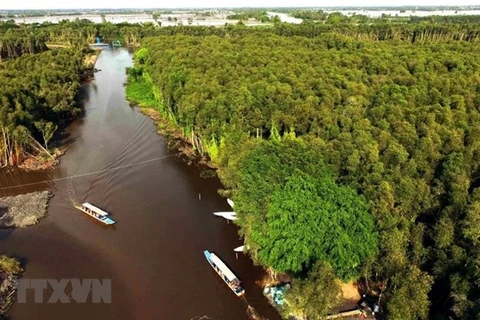Hanoi (VNA) – The application of source-to-sea (S2S) approach on managing plastic waste in the central province of Quang Nam’s Hoi An city was discussed at an online meeting on July 14.
Held by the Stockholm International Water Institute (SIWI) and International Union for Conservation of Nature (IUCN), the meeting was part of a project on the matter that lasts until May 2022.
Bui Thi Thu Hien, Marine and Coastal Programme Coordinator at the IUCN Vietnam, said it is the first activity to connect sides involved in the project.
According to Hien, S2S is an approach to reduce marine waste through connectivity and interrelation between river basins and coastal areas to address the overall problem of land and freshwater management and ecosystems to control and limit plastic waste from different sources poured into the sea and freshwater systems.
Kieu Thi Kinh from the University of Science and Education under the University of Da Nang, reviewed an audit report on Hoi An’s plastic waste in 2020.
She said the city’s main emission sources include households (accounting for 45 percent), business establishments (40 percent), markets (12 percent), schools and offices (2.7 percent) and craft villages (0.3 percent).
The total amount of plastic waste generated in Hoi An is more than 8,909 tonnes a year, half of which was nylon and packaging. More than 519 tonnes, mainly valuable plastic of high value and large size, of the total are recycled.
For a greener Hoi An, Kinh recommended waste classification at sources, the reduction of plastic bags and single-use plastics, and increasing management for agrofishery, construction, and street waste.
Ruth Mathews, a representative from the SIWI, said the approach’s intended outcome is to identify appropriate actions in response to changes in major flows, generating economic, social and environmental benefits.
Participants suggested the local authorities come up with mechanisms to encourage individuals and businesses to invest in waste treatment; build standards for and put into operation solid waste treatment plants; and form norms on waste collection and transportation at source./.
VNA

























